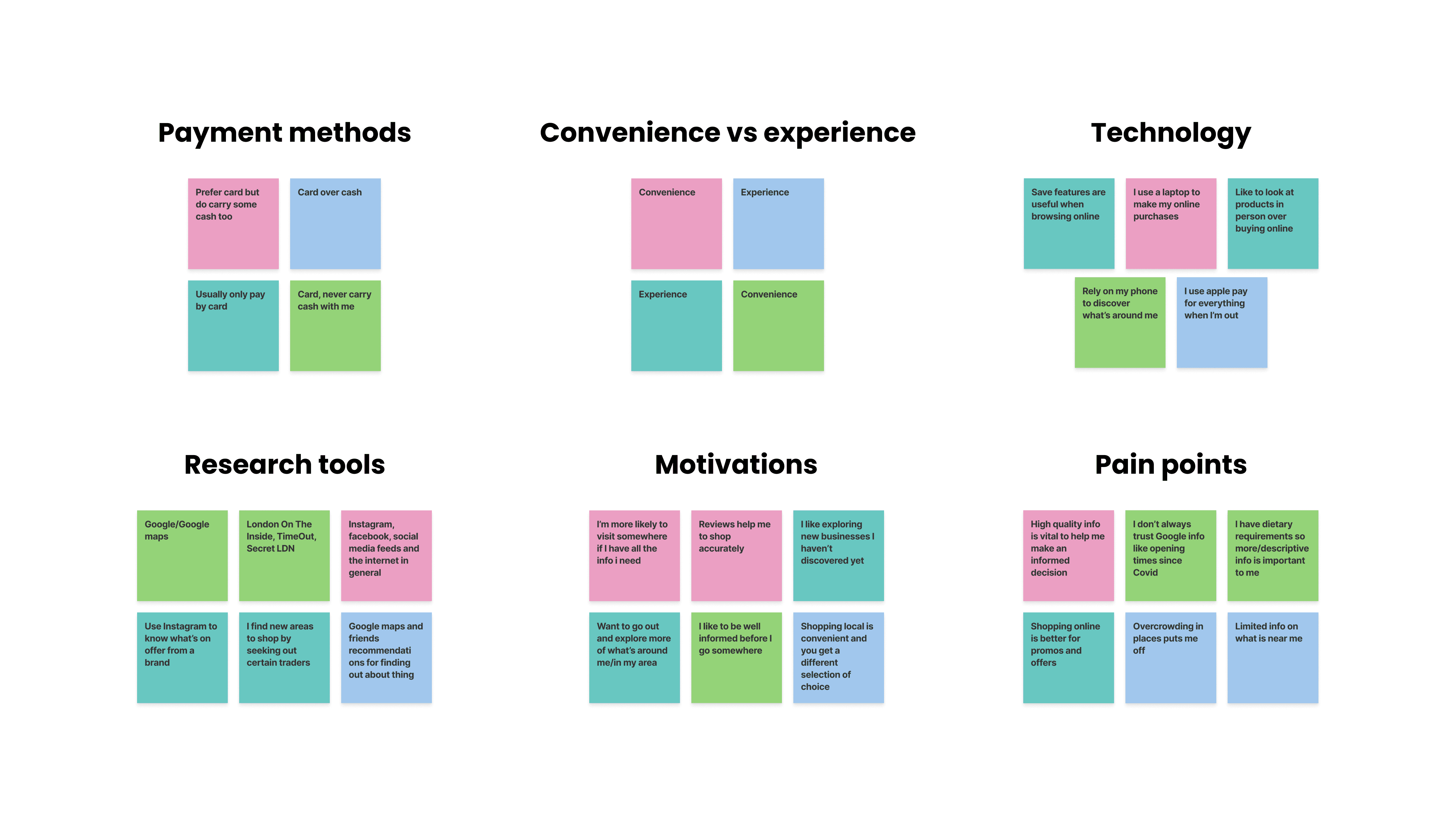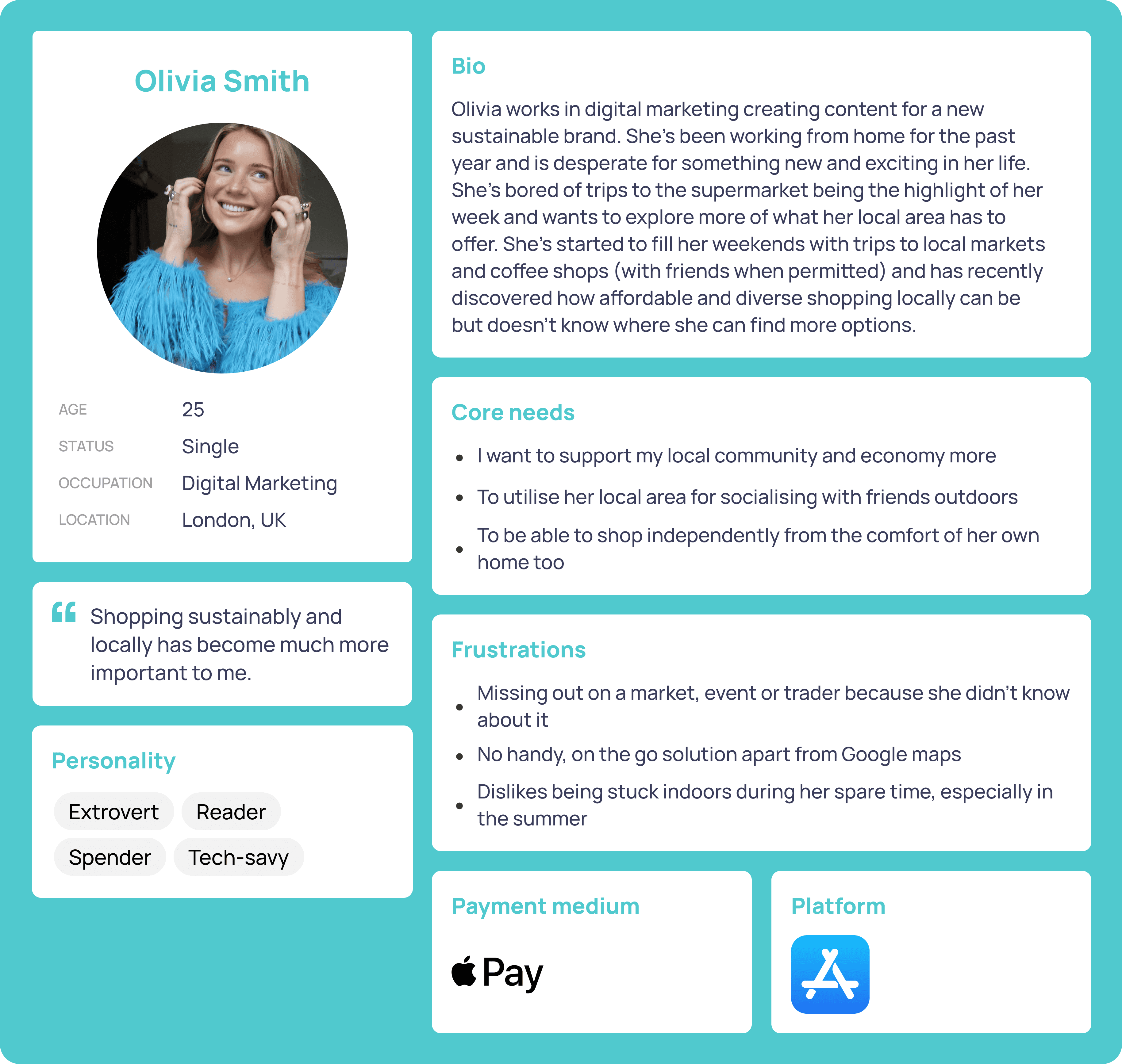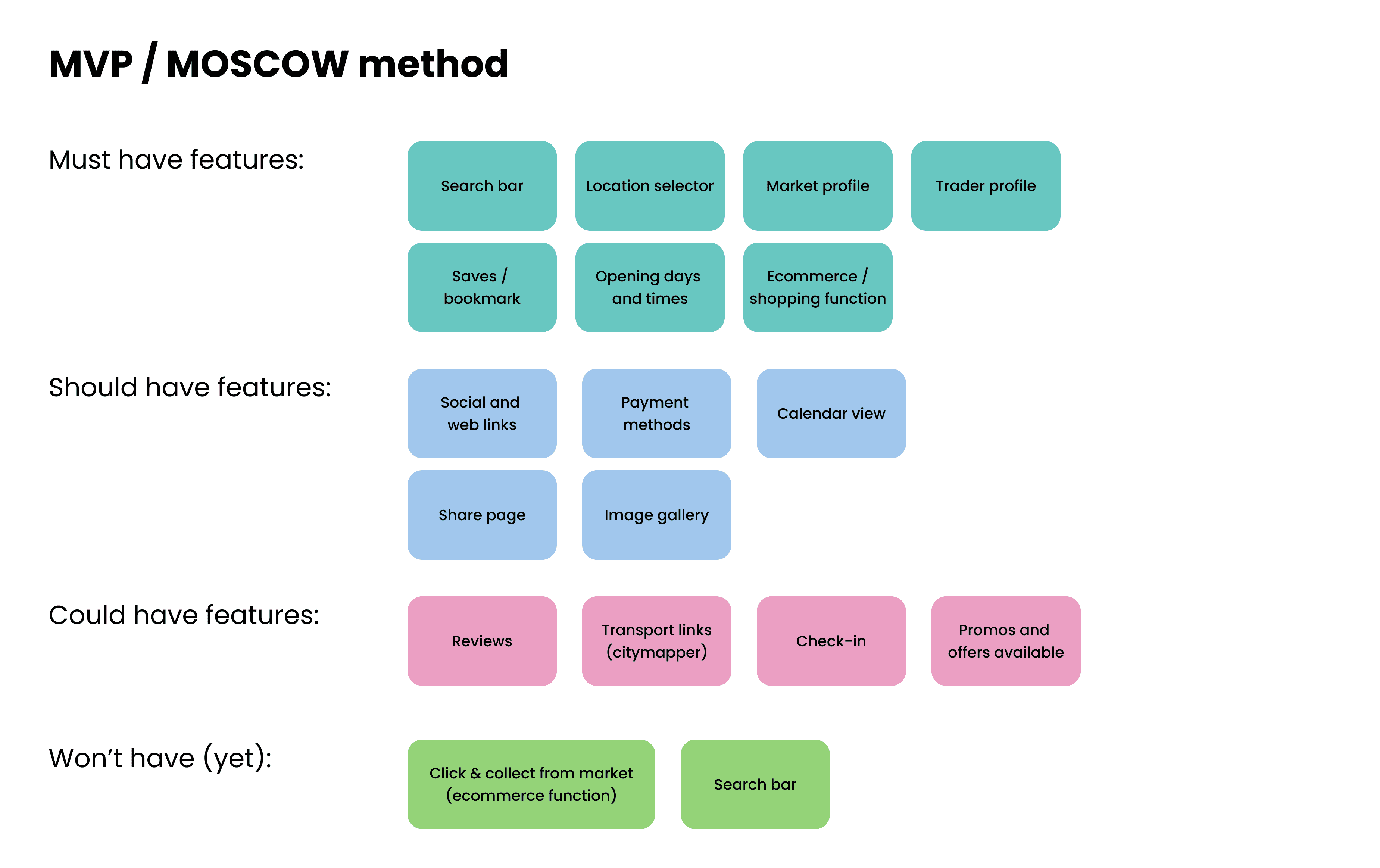Marketti | integrated ecommerce solution
Category
Ecommerce, payments
Deliverables
UX/UI app design, CMS


Research and strategy:
First up was user research, in the form of surveys and interviews
Goal = to understand shoppers habits, online and offline, towards local businesses and whether the pandemic affected these habits. Also to understand what they are missing in order to support these businesses regularly.
Target audience = Predominantly females (80/20% ratio), Gen X and millennials.
Method = Survey link posted in online independent shopping/highstreet forums, and in-depth zoom interviews using a prepared discussion guide.
Sample questions asked:
* Could you tell the last time you bought from a small business? Why?
* Which devices do you usually use to shop online? Why?
* Tell me how you felt the last time you shopped at a market
* How often do you shop locally? What stops you or supports you in doing this?
* How do you currently go about finding out what markets/local shopping events are on in your area?
* What payment methods do you prefer to use when shopping in person? (Do you ever carry cash as a back up?)
Affinity mapping:
From these studies I compiled all of the insights and grouped similar ones - this helped me to identify what was important to users and pain points that they were currently experiencing.
User research findings indicate that users:
* Feel compelled to support local communities more and explore nearby areas due to COVID-related travel limitations
* Desire to discover new experiences close to home, particularly with friends, considering indoor restrictions and social bubbles
* Lack access to high quality, detailed and up-to-date information about local offerings
* Lack a readily available research tool that provides the necessary information, especially on the go
* Are unaware of which vendors are trading where, when or what products they’re selling
2. Market research and competitor analysis: Following the initial phase, I deep dived into exploring the existing landscape and conducted a comprehensive competitor analysis to discover the current offerings and pinpoint their weaknesses. Initially, the focus was solely on the shoppers’ perspective, with plans to revisit the sellers’ side at a later stage within the project scope.
The competitors researched were: Pedddle, Shop Appy, Little Places and Etsy.
Key insights from the competitor analysis revealed a significant observation: all existing platforms were desktop based without any accompanying app solution, expect for Etsy, which leaned towards ecommerce rather than serving as a discovery tool. This highlighted the importance of developing an app for on-the-go usage.
Furthermore, I noted that each existing solution targeted a specific sector, such as artisan markets, high streets or independent stores within a single city. None of them encompassed a range of markets and traders, indicating a gap in the market for a comprehensive solution that caters to markets and traders across various sectors, but within a similar proximity.

User persona:
By analysing the results of our interviews, I crafted a persona to give us a better understanding of our target users and what they aim to achieve. This enables us to have a clear and focused view of our audience’s needs and desires.
Minimum viable product (MVP):
Using the MOSCOW method, I refined the essential features for the app. Despite numerous features that could alleviates users’ pain points, I iterated through this process multiple times to narrow down what was truly essential from the outset and what could be introduced in subsequent iterations.
User flow - finding a local market:
This user flow helped me in visualising how users would navigate through the app to discover markets and/or traders, effectively addressing their pain point and enhancing their overall user experience by streamlining the process.
Sketches and wireframes:
Now it was time to consolidate all of the research findings and progress to wireframe sketches to establish the foundation of the app. I opted for a handful of frames to provide a robust structure for transitioning to high-fidelity wireframing, considering time constraints at this stage of the project.
As a result, more than 50 high-fidelity screens were designed, encompassing various features like onboarding, sign-up and sign-in functionalities.




Next steps and outcomes:
The next phase of this project was to dive into the second research component "independent shops and traders" so that I could structure and design their side of the app and also a content management system that was to work alongside the app and support the traders.
Following this, I collaborated with our developers to finalise the app, test and release it to the iOS and Android app stores.
Marketti received a positive reception, particularly from traders, market operators and garnered support from NABMA, the National Association of British Markets. We successfully onboarded over 20% of markets across the UK and Ireland within the first 12 months, providing them with contactless payment devices to assist in the adoption of digital methods within this traditional sector.
Following the launch, our team embarked on a 6-stop UK market tour to facilitate the rollout of both the app and payment devices. Witnessing the app in action was fulfilling, and the valuable user feedback we received during the tour help to guide us in making iterative improvements to certain features.
Learnings:
This project was substantial in size, encompassing various aspects and addressing multiple audiences, all while ensuring it was in alignment with the overarching business objectives to drive revenue.
As my first major project from conception to launch, it taught me the importance of flexibility and adaptability. I learned that you can't always follow the process that you had in mind, especially when navigating constraints like budget limitations, time constraints and the dynamic of a small team environment.
Branding - colour palettes, typography, logos and icons:







